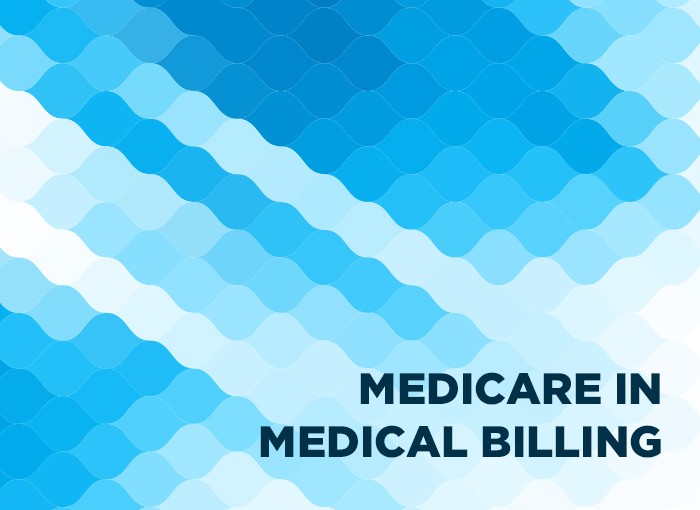What is Medicare in Medical Billing
Medicare is a Federal health insurance option for people aged 65 or older, citizens under 65 with specific disabilities, and people of any age with end-stage Renal diseases (ESRD). Most of the healthcare providers’ income comes from Medicare beneficiaries, and therefore, the billing process is very particular. More than 58.5 million beneficiaries are enrolled in Medicare, so the top question to think about should I need to be a healthcare provider? Just like any other insurance option, it depends on the patient demographics to keep your patient flow up. More than 61,00 hospitals enrolled with Medicare with 15,000 skilled staff along with 1.2 million service providers for keeping up with constant Medicare for the elderly and people with ESRD.
Before we get into specifics with Medicare, it is divided into four sections/parts and administered by the Federal government. It has its coverage and set of monthly premiums with a fixed deductible and coinsurance amounts affected by national regulations and laws for the decisions. Medicare is different from Medicare Advantage, and to get paid for the rendered services. It is always good to know the intricacies of Medicare that are explained in the article.
How does Medicare Insurance work in Medical Billing?
To qualify for Medicare Health Insurance coverage: a series of contractors managed known as Medicare Administrative Contractors. The claims are then filed by medical billing officials after the rendered treatment and sent to the respective agencies for settlements of payments. In this standardized process, the claims contain a series of information like procedural codes, provider information, diagnosis codes, patient information, and prices that are obtained from the superbill by the facility.
PART A- Hospital Insurance
- It is mostly to inpatient hospitals, hospice, nursing facilities, and health services.
- This coverage extends from short-term stay to long-term stays, hence comes with several criteria and restrictions. That being the high-volume payer, service providers should know the break-ups for Medicare participation before opening up that can of worms.
- Medicare encourages a higher quality of healthcare and cost based on the services provided.
- To elaborate, if a patient wants to return to a hospital within 30 days of the treatment, you are not abiding by the Medicare fee schedule for this service. Any further remaining balance like copayments, coinsurance, deductibles, or other out-of-pocket expenses will be taken care of by the patient directly.
- To claim this part of Medicare, the form accepted from hospitals and skilled nursing facilities are UB-04 or CMS-1450.
PART B- Medical Insurance
- This section of the program provides medical insurance for outpatient care, physician services like x-rays, home health services, durable medical equipment like walkers and cane, and many procedures for preventive services.
- Services not covered in PART A are covered here to make it the basic Medicare coverage package for the elderly.
- For service providers who have accepted the assignment, Medicare will reimburse 80% of the Medicare-approved amount. The remaining 20% of the cost put across the patient.
- To claim, use the CMS-1500 form as the standardized procedure.
- For non-participating providers, Medicare will pay the patient directly as per the reimbursement amount, and the patient will need to pay in full for treatment.
PART C- Medicare Advantage (MA)
- This part of medical insurance is more complicated as it allows Medicare subscribers to receive the entirety of their coverage through approved private insurance companies.
- This subscription provides all PART A&B services and is offered by PPO and private HMO organizations.
- This insurance plan is paid for prescription drug coverage as well as other supplement benefits by the federal government and reimburses the private payer.
PART D- Prescription Drug Benefit
- A most recent addition and only for providers who are licensed to bill PART D.
- Practiced after the Medicare Prescription Drug, Improvement, and Modernization Act of 2003.
- It covers prescription drug costs and vaccines through approved private insurance companies during healthcare.
- It comes with monthly premiums and the most recommended plan to receive coverage from this portion of Medicare.
Understanding the Service Providers
Now take that as you are enrolling in Medicare to see an influx of patients with greater treatment acceptance. In that case, you should consider four tiers for Medicare as Participating, Non-participating, Opt-out & Non to determine what is best for your patients along with your practice.
Participating- These providers signed par agreements with Medicare and have to stick to the rules. The providers accept all the Medicare assignments at a preset price called a Medicare-approved amount.
Non-participating- Non-participating providers can charge 115% of the fee schedule fee, and Medicare beneficiaries need to pay in full for treatment. They will accept a few assignments based on specific procedures.
Opt-out- They are what they sound like, and the beneficiaries will not seek any reimbursement from Medicare and will pay entirely. That means that some providers have no limit to the amount for a particular procedure.
Non- Service providers who have neither opted-out nor participated are permitted to ask for their UCR. Please keep in mind that here the patients can submit a claim on their own to receive reimbursement on the fee.
It is a proposition to work with an organization that works exclusively in Medicare credentialing. Besides, if you enroll in Medicare, then you need to go in for PART B combined with a DME.



